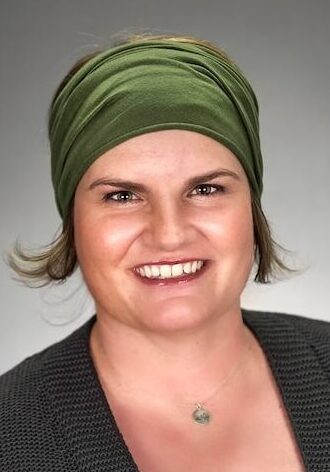The principles of trauma performance improvement (PI) are well understood, but many trauma programs struggle with developing effective PI processes. One of the biggest challenges is achieving consistency in PI documentation and review.

UCHealth’s winning innovation was submitted by Jessica Cofran, MSN, RN, TCRN, CSTR, CAISS, trauma informatics manager for UCHealth Northern Colorado Region, and Jamie Teasley-Bennett, BSN, RN, TCRN, lead trauma nurse clinician for UCHealth Medical Center of the Rockies in Loveland, Colorado.
Inconsistency in review
The UCHealth team’s starting point was a common problem in many performance improvement programs — inconsistency between reviewers. At Medical Center of the Rockies, three trauma nurse clinicians are dedicated to PI review.

“Our trauma nurse clinicians did not always look at events through the same lens,” Cofran said. “Different records were sometimes looked at differently by the same reviewer, and each reviewer had a different process.”
In addition, documentation was a challenge. “Key elements of documentation were in various places within the record, and the differentiation between action planning and event resolution was unclear in our current practice,” Cofran explained. “As a result, the PI team spent significant time revising cases in preparation for secondary and tertiary review.”
One system-related problem was poor configuration of trauma registry PI screens, which led to significant variability in the way information was captured.
“An opportunity for improvement was identified for optimizing the trauma PI workflow,” Cofran said. “The primary goal was to standardize trauma PI reviews and documentation to achieve consistency among team members.”
Building a solid platform
The first step was to reconfigure the trauma registry to improve PI documentation. Within the PI screens, the team created dedicated documentation fields for each level of review: primary, secondary, tertiary and quaternary.
“This allowed us to stop redundant documentation, and it let everyone see exactly what happened at each step,” Cofran said. “If you have the ability to modify your trauma registry, it’s worth taking a look at that because the registry is not always ready out of the box to support the processes you have in place.”
Next, Cofran worked with the PI team to develop a comprehensive trauma PI dictionary. “The dictionary provides the framework for our PI review process,” she said. “It gives us all the information we need to make sure we are performing the process consistently.”
This UCHealth trauma PI dictionary features:
Audit filter definitions and targets. Live links within the dictionary provide immediate access to the center’s definition for each audit filter. In addition, the dictionary specifies any applicable benchmarking goals for each filter as well as the reporting and review timeline.
Level of review guidance. The dictionary specifies the level of review required for each event and which team member can close an event at any given level. For example, events involving deviation from the center’s open fracture CPG can be closed at secondary review by either the TPM or the TMD.
Key info and resources. Dictionary entries include links to National Trauma Data Bank (NTDB) hospital event definitions (to assist with event validation), relevant clinical practice guidelines and a hospital event resource. This resource lists specific information that will be required during the review process. For instance, when reviewing events involving rapid anticoagulant reversal, the TMD will want to know which medications were used, what doses were given, when meds were started, etc.

Standard PI wording. The dictionary provides standard verbiage for documenting OFIs, action plans and event resolution. For example, standard loop closure wording is “Future similar patients are less likely to experience this event because…”
Referral letter templates. For events that can be reviewed by another department or facility, the dictionary provides letter templates for PI referrals (neurosurgery review, orthopedic surgery review, prehospital review, etc.)
Consistency and efficiency
The implementation of the PI dictionary has streamlined the trauma program’s PI processes and improved the consistency of documentation and review.

“There has been substantial improvement in the trauma team’s understanding of PI action plans and loop closure,” Cofran reported. “Team member satisfaction has improved due to a well-defined and streamlined trauma PIPS processes.”
According to Teasley, the dictionary has been disseminated to four UCHealth hospitals within Northern Colorado, enabling a regionalized approach to trauma PI.
The UCHealth trauma PI dictionary is a standalone document (it is not incorporated into the trauma registry software). Cofran explained that the dictionary is included as an addendum to the center’s PI plan. That way, any changes to policy within the PI plan can easily be incorporated into the PI dictionary.
According to Cofran, the trauma PI dictionary is a “living document” that evolves constantly based on the needs of the trauma program. “The dictionary is reviewed and revised annually to ensure relevance,” she explained, “and all trauma PI team members participate, which promotes buy-in and sustainability.”
Learn more
Cofran and Teasley explained their trauma PI dictionary in detail during the May 2023 online event honoring the winners of the Peregrine Award for Trauma Innovation. To view the webinar on-demand, visit Profiles in Trauma Innovation: Improving PIPS and SBIRT.
The UCHealth team is making their trauma PI dictionary to other trauma centers. In exchange, they ask teams that use the dictionary to take part in a study examining the resource’s implementation and impact. To find out more, email Jessica Cofran or email Jamie Teasley.

